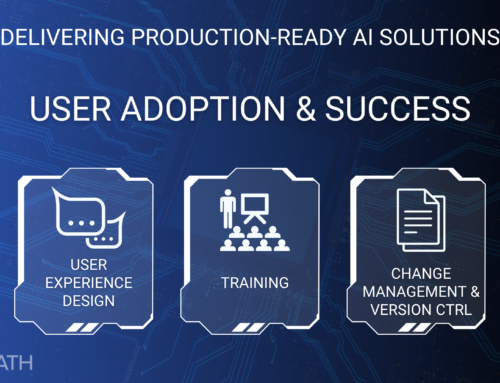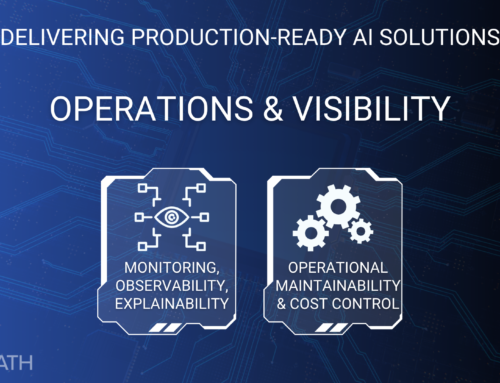Machine learning model deployment (serving) in enterprise is not an easy task. In fact, ML model deployment in any environment is a complicated endeavor, and throwing in the complexities of enterprise requirements simply adds to the difficulty.
When comparing Kubeflow, DataRobot, and H2O.ai for enterprise model deployment, it's important to consider their focus areas, deployment capabilities, scalability, and ease of use. Here's a breakdown:
1. Kubeflow
- Focus: Open-source platform built specifically for Kubernetes, primarily used for managing end-to-end machine learning (ML) workflows.
- Deployment: Designed for scaling ML models on Kubernetes clusters. It automates workflows for building, training, tuning, and deploying ML models in cloud-native environments.
- Strengths:
- Scalability: Excellent for enterprises looking for containerized, cloud-native solutions that scale automatically using Kubernetes.
- Customization: Offers flexibility and control over the entire pipeline, allowing custom deployments and integrations with other open-source tools (e.g., TensorFlow, PyTorch, Argo).
- Open-source: Cost-effective for teams with expertise in Kubernetes and cloud architecture.
- Weaknesses:
- Complexity: Requires DevOps and Kubernetes expertise to set up, manage, and optimize. Initial setup can be complex.
- User Experience: Lacks the out-of-the-box automation and simplicity of commercial platforms.
Best for: Enterprises with strong cloud-native, Kubernetes, and DevOps teams, looking for full control over the ML lifecycle.
2. DataRobot
- Focus: Commercial end-to-end AI/ML platform that emphasizes automation, including automated machine learning (AutoML) and deployment capabilities.
- Deployment: Provides enterprise-grade deployment features, including one-click deployment, model monitoring, governance, and scaling options (both on-premise and cloud).
- Strengths:
- Ease of Use: Intuitive user interface designed for data scientists, ML engineers, and business users. Provides automated model deployment with minimal configuration.
- Enterprise Features: Built-in model management, monitoring (drift detection, automated retraining), compliance, and governance capabilities.
- Pre-trained Models & AI Services: DataRobot offers pre-built models and AI services, speeding up deployment.
- Weaknesses:
- Cost: Being a commercial platform, it can be costly, especially for smaller teams or organizations.
- Less Customization: Although it offers extensive features, it's less flexible compared to open-source solutions like Kubeflow.
Best for: Enterprises looking for an easy-to-use platform with strong automation features, model governance, and enterprise-level scalability, especially those without extensive DevOps capabilities.
3. H2O.ai
- Focus: H2O.ai provides both an open-source AutoML platform (H2O-3) and a commercial platform (Driverless AI) for automating the ML lifecycle.
- Deployment: H2O allows model deployment via various environments, including REST APIs, containers (Docker), and Kubernetes. It supports on-premises, cloud, and hybrid setups.
- Strengths:
- AutoML: Strong AutoML capabilities that automate feature engineering, model selection, and tuning. Driverless AI enhances the automation for data scientists.
- Scalability: Scales well in distributed environments and integrates seamlessly with big data tools like Apache Spark and Hadoop.
- Open-source & Enterprise Versions: The open-source version offers a cost-effective way to explore AutoML, while the enterprise version (Driverless AI) offers advanced deployment features, model interpretability, and monitoring.
- Weaknesses:
- Learning Curve: While Driverless AI is user-friendly, the open-source H2O-3 requires more technical knowledge for custom deployment pipelines.
- Less Flexibility: Compared to Kubeflow, H2O's deployment capabilities are less customizable for complex enterprise workflows.
Feature Comparison
| Feature/Aspect | Kubeflow | DataRobot | H2O.ai |
|---|---|---|---|
| Type of Platform | Open-source, Kubernetes-based ML platform | Enterprise-level AI/ML automation platform | Open-source and enterprise AI/ML platform |
| Model Deployment | Customizable and flexible, Kubernetes-native | Automated, with a focus on ease of use and speed | Offers fast deployment and real-time scoring |
| Model Hosting | Containerized, leveraging Kubernetes infrastructure for scaling and resource management | Managed hosting with options for cloud or on-prem deployment | Flexible deployment: cloud, on-prem, or hybrid |
| Scalability | Highly scalable with Kubernetes' native capabilities | Scales automatically with enterprise-grade MLOps | Scalable with built-in support for distributed computing |
| Supported Frameworks | Supports multiple frameworks (TensorFlow, PyTorch, XGBoost, etc.) | Supports a wide range of frameworks, including AutoML and pre-built models | Supports various frameworks (H2O, TensorFlow, PyTorch) |
| MLOps Support | Strong MLOps focus: pipelines, orchestration, CI/CD integration | Built-in MLOps features like model versioning, monitoring, and retraining | Provides end-to-end MLOps, including AutoML, monitoring, and logging |
| Ease of Use | Requires Kubernetes expertise, steep learning curve | Easy-to-use, highly automated, designed for non-experts | User-friendly, supports AutoML but requires more customization than DataRobot |
| Customization | Highly customizable, suited for advanced use cases | Limited customization; emphasizes automation and ease | Good customization options, especially for AutoML and manual modeling |
| Automation | Manual setup for pipelines and orchestration; automation can be built in | Highly automated, including AutoML and deployment | Provides AutoML features with options for manual tuning |
| Monitoring and Governance | Offers monitoring tools (e.g., Prometheus, Grafana) but requires setup | Built-in monitoring, model governance, and explainability tools | Offers model monitoring, governance, and transparency tools |
| Integration with Existing Systems | Can be integrated with various services and databases via Kubernetes connectors | Integrates easily with enterprise data systems, especially cloud platforms | Good integration with enterprise systems and cloud providers |
| Use Cases | Ideal for tech-savvy organizations with Kubernetes infrastructure | Ideal for fast deployment with minimal engineering effort | Suited for enterprises needing flexibility, especially in AutoML |
| Community and Support | Large open-source community, extensive resources but more DIY | Strong enterprise support, with dedicated customer success teams | Strong community support for open-source, with enterprise support for H2O.ai Driverless AI |
| Cost | Open-source, free to use, but requires management of infrastructure | Paid service with various enterprise pricing tiers | Open-source (H2O.ai) is free, but enterprise-level H2O Driverless AI is paid |
| Learning Curve | High, due to the need for Kubernetes and ML infrastructure knowledge | Low, designed for users without deep ML expertise | Moderate, but easier if using AutoML features of Driverless AI |
Key Differences
- Target Audience:
- Kubeflow is best suited for organizations with strong technical teams that are already familiar with Kubernetes. It requires expertise in DevOps and MLOps but offers maximum flexibility and customization.
- DataRobot is designed for enterprises that prioritize ease of use and speed. It's highly automated, making it great for teams with limited ML expertise or those wanting to minimize hands-on engineering work.
- H2O.ai provides a balance between automation and flexibility. Its AutoML capabilities (Driverless AI) make it accessible, while the open-source version offers more customization options for advanced users.
- Deployment and Infrastructure:
- Kubeflow is containerized, relying on Kubernetes for deployment, orchestration, and scaling, making it highly scalable for cloud-native enterprises. However, it requires significant setup and management.
- DataRobot abstracts away most of the infrastructure management and focuses on a streamlined deployment process with built-in MLOps features. It's well-suited for companies that need a fully managed, enterprise-grade solution.
- H2O.ai offers deployment flexibility, allowing users to deploy models on various infrastructures (cloud, on-premise, hybrid) without needing to manage Kubernetes directly.
- Automation vs. Customization:
- DataRobot emphasizes automation, including AutoML, automatic deployment, and monitoring, which is ideal for companies that prioritize time-to-market over granular control.
- Kubeflow requires manual configuration for most tasks but offers maximum customization. Enterprises can design their deployment pipeline exactly as needed.
- H2O.ai offers a mix of both. AutoML capabilities are automated, but users can also manually configure deployments and training if they prefer.
- Integration with Existing Systems:
- DataRobot is highly enterprise-oriented, making integration with existing IT ecosystems (cloud platforms, data warehouses) seamless. Its emphasis on automation extends to integrations.
- Kubeflow, being more developer-focused, requires custom integration but can connect to any system using Kubernetes tools.
- H2O.ai offers good integration with enterprise databases and platforms, especially when using H2O Driverless AI.
Summary
- Kubeflow is the best option for enterprises with advanced technical teams that need high flexibility and are already using Kubernetes.
- DataRobot is ideal for companies looking for automated, no-code model deployment with minimal infrastructure management.
- H2O.ai provides a middle ground, offering a balance of automation and customization, making it well-suited for companies that want flexibility but also value AutoML for quick model development and deployment.





